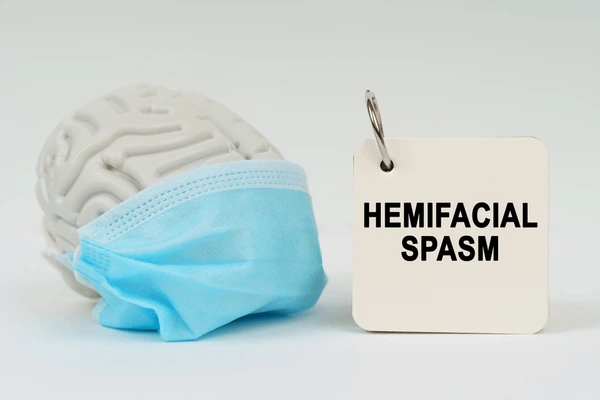Hemifacial Spasm treatment

Hemifacial Spasms: Treatment by Dr. S Narayan, Neurosurgeon in Jamshedpur
A hemifacial spasm is a condition where the muscles on one side of the face twitch involuntarily, often resembling a wink. This twitching can be embarrassing, and it usually starts with the eyelid muscles, gradually spreading to one half of the face. While it can affect both men and women, it is more common in women. Furthermore, the main cause typically involves a blood vessel pressing on the facial nerve where it exits the brainstem.
Symptoms of Hemifacial Spasm:
Twitching of the Eyelid: The condition often starts with occasional, uncontrollable twitching of the eyelid muscles. Initially, this twitching can be mild, but it may become more frequent over time.
Spreading to Other Facial Muscles: Gradually, the twitching may spread to other parts of the face on the same side, including the cheek, mouth, and chin. As a result, more facial muscles become affected.
Muscle Cramps: Additionally, some people experience muscle cramps or tightness in the affected side of the face.
Eye Closure: Moreover, the twitching can cause the eye on the affected side to close involuntarily, which might interfere with vision.
Facial Pain: In some cases, there may be mild pain or discomfort in the areas where the muscles twitch. Consequently, this can add to the discomfort of the condition.
Embarrassment or Distress: Finally, the visible twitching can be embarrassing and cause emotional distress for those affected.
For those experiencing hemifacial spasms, Dr. S Narayan, a top neurosurgeon in Jamshedpur, offers expert diagnosis and treatment. Dr. S Narayan specializes in neuromuscular disorders, providing the best care and treatment options available.
Frequently Asked Questions
These hemifacial spasms, also known as facial twitching or winking disease, involve repeated, uncontrolled contractions of facial muscles on one side of the face. Typically, these spasms occur when talking; however, they can also happen when you are not talking.
Twitching Starts Around the Eye: The eyelid muscles contract repeatedly, causing the eye to shut and open involuntarily. As a result, this twitching can be noticeable.
Spreads to Other Facial Muscles: Gradually, the twitching spreads to other facial muscles, including the cheek and the corner of the mouth on the affected side.
Visible Winking and Strange Gestures: Consequently, the twitching can make it appear as if the person is repeatedly winking and making odd facial expressions.
The most common cause of hemifacial spasms is a blood vessel pressing on the facial nerve where it exits the brainstem, specifically known as the root entry zone (REZ). Furthermore, as people age, blood vessels can elongate and compress the nerve. As a result, this compression can lead to the development of these spasms
Yes, these conditions can cause hemifacial spasms, although they are less common. In addition to this, tumors pressing on the nerve, facial nerve trauma, Bell’s palsy, old strokes, and multiple sclerosis can also contribute to the development of hemifacial spasms.
At Dr. S Narayan’s Neuro & Spine Clinic, the preferred treatment is Micro-Vascular Decompression (MVD) surgery. This procedure involves gently moving the offending blood vessel away from the nerve and placing a small Teflon sponge to keep it separated.
Early MVD surgery can prevent the blood vessel from causing further damage to the nerve. The longer the compression continues, the more severe the spasms can become, and the chances of a complete cure decrease.
- Detailed history and diagnosis: Dr. S Narayan will take a detailed history to rule out other causes like Bell’s palsy or stroke.
- MRI scan: A high-quality MRI will be done to study the facial nerve in the REZ region.
- MVD surgery: Under general anesthesia, a small incision is made behind the ear to access the nerve and move the blood vessel.
MVD surgery has a very high success rate, with more than 98% of patients experiencing permanent relief from spasms. Botox injections are another option but provide only temporary relief and do not address the root cause.
- Hospitalization: Typically, patients stay in the hospital for three to four days.
- Recovery: Most patients can walk within 24 hours post-surgery. Spasms usually stop immediately or reduce significantly within two weeks.
Dr. S Narayan, a renowned neurosurgeon in Jamshedpur, has extensive experience in treating hemifacial spasms with MVD surgery. With a highly trained team and top-class equipment, Dr. Narayan’s center offers excellent results and a high success rate. To schedule a consultation with Dr. Narayan call us @ 7389992400 or 8434683947.
